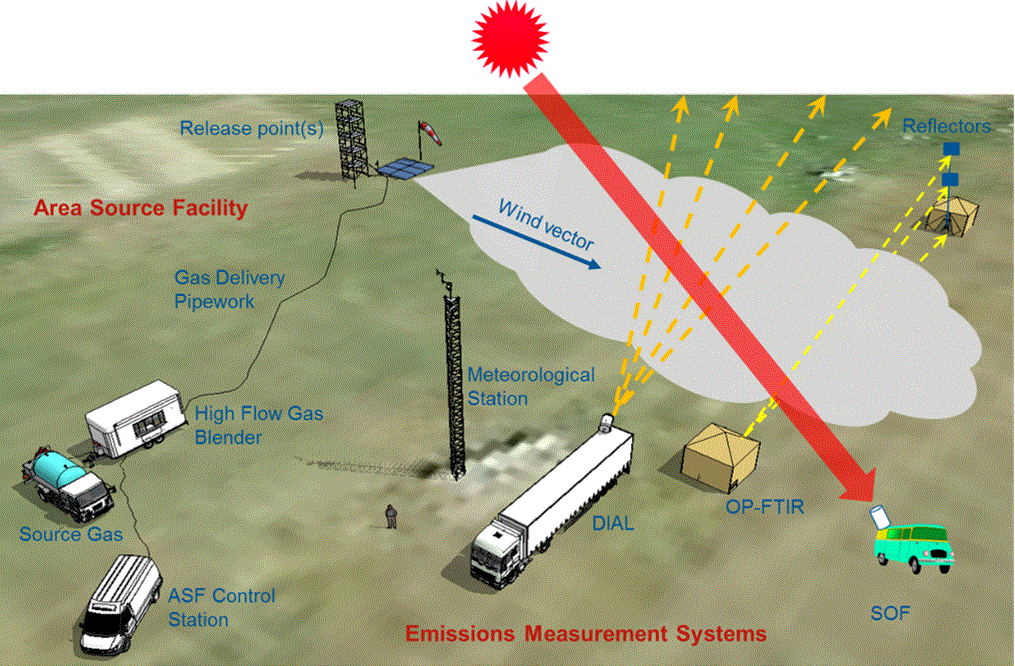The SCAQMD conducted a controlled-release experiment to compare the performance of different optical remote sensing (ORS) technologies and obtain critically important quality assurance information on emission flux measurements. To this end, known quantities of non-odorized propane were released in an open field, while three ORS technologies (DIAL, SOF and OP-FTIR) were simultaneously deployed (by Fluxsense, NPL, Atmosfir, and Kassay, respectively) to quantify the released propane amounts. A conceptual drawing of the controlled-release experimental setup is shown below. To the best of our knowledge, this is the first time that a side-by-side comparison of all three major ORS methods was conducted to evaluate their performance.

The main conclusions of the controlled-release experiment are:
-
ORS techniques are capable of accurately measuring VOC fluxes ranging from small releases of only few kg/hr through to a larger rates of hundreds kg/hr
-
The DIAL method demonstrated to be the most accurate and the least affected by meteorological conditions
-
The SOF method consistently underestimated emission fluxes during the controlled-release study. Close proximity to the source may have been a cause of this underestimation
-
Measurement approaches based on OP-FTIR (VRPM and Area-Source technique) are highly dependent on meteorological conditions and limited by the spatial extent of placement of retroreflectors
-
All participating ORS techniques showed a good agreement when monitoring emissions from real-life sources such as refinery tank farm, small oil processing facility, and an oil field
Presentations